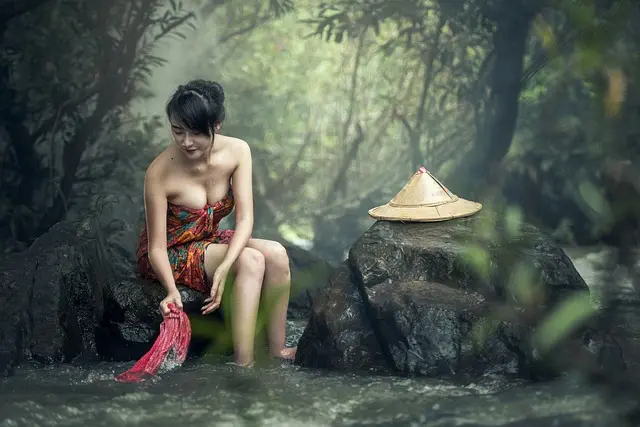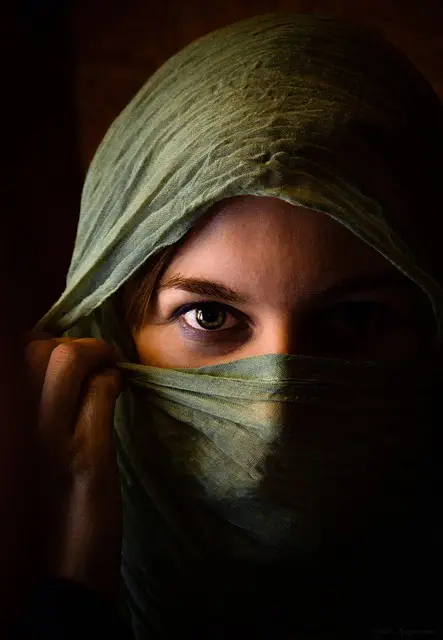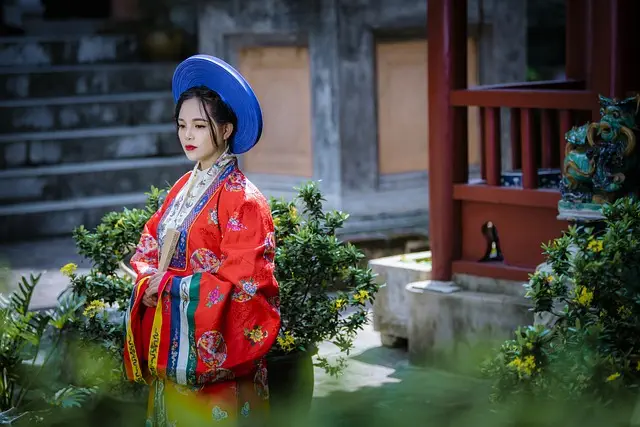Global girls' costumes are steeped in cultural identity, history, and social significance, serving as a visual narrative that reflects each society's heritage and rites of passage. From the Dayak tribes' attire to Japanese coming-of-age garments, these outfits incorporate locally sourced materials and techniques passed down over generations. The Quinceañera dress in Mexico and African beaded gowns are just two examples that illustrate how girls' costumes worldwide celebrate adolescent transformations and preserve cultural legacies. Historically, girls' costumes have communicated social standing, from ancient Rome's practical tunics to the ornate dresses of the medieval period. The Renaissance introduced an emphasis on body contours, which continued into the Baroque and Rococo eras, while the Victorian era brought voluminous skirts and corsets. The Industrial Revolution's advancements in textile production diversified girls' costumes, leading to the 20th century's less restrictive clothing that allowed for greater self-expression. Today, girls' costumes blend historical influences with modern aesthetics, offering a multifaceted expression of identity and tradition. These garments are not merely clothes but symbols rich in cultural significance, signifying maturity, social roles, and femininity, and reflecting societal values and norms. The global array of traditional girls' costumes, from India's chiffon sarees to Austria's dirndl dresses, showcases a mastery of materials and decorative techniques, each carrying symbolic and aesthetic significance within their cultures. Modern interpretations of these traditional garments by designers have brought a fresh perspective, merging history with contemporary fashion to keep the narrative of girls' costumes alive and vibrant in today's fashion landscape.
Embark on a journey through time and across cultures with this exploration of girls’ costumes, a vibrant tapestry woven into the fabric of global traditions. This article delves into the origins, significance, and evolution of these garments, shedding light on their cultural symbolism and the material mastery that defines them. From ancient rituals to modern runways, witness how traditional attire for girls has influenced contemporary fashion, offering a unique lens through which to view societal values and artistic expression. Join us as we unravel the rich history behind girls’ costumes and their enduring impact on cultural identity.
- Global Traditions: Exploring the Origins and Significance of Girls' Costumes
- The Evolution of Girls' Costumes Through History
- Cultural Symbolism: What Girls' Costumes Reveal About Different Societies
- Material Mastery: Fabrics and Embellishments in Traditional Girls' Attire
- Modern Interpretations: How Contemporary Fashion Incorporates Historical Girls' Costumes
Global Traditions: Exploring the Origins and Significance of Girls' Costumes
Global traditions surrounding girls’ costumes are a rich tapestry of cultural identity, history, and social significance. From the ornate headdresses of the Dayak tribes in Borneo to the intricate kimonos worn by young Japanese women during coming-of-age ceremonies, these garments serve as a visual narrative of heritage and rites of passage. The traditional Mexican Quinceañera dress, for instance, encapsulates the transition from childhood to adulthood, reflecting both personal and communal values. In various African cultures, beaded gowns are not merely attire but works of art that tell stories of ancestry and symbolize a girl’s journey towards womanhood. These costumes often incorporate locally sourced materials and time-honored techniques passed down through generations, ensuring that each garment is imbued with the history and traditions of its people. The global diversity in girls’ costumes underscores their significance as tangible artifacts of cultural legacy, each with its own set of meanings and expressions within different societies. Exploring these origins and significances offers a profound insight into the varied ways in which cultures around the world celebrate the transformative journey of adolescent girls.
The Evolution of Girls' Costumes Through History
Throughout history, girls’ costumes have undergone significant transformations, reflecting societal norms, cultural shifts, and technological advancements. In ancient civilizations, such as Rome and Greece, young girls typically wore simple tunics that allowed for practicality and modesty, often adorned with vibrant colors or patterns that signified family status or personal taste. As eras progressed into the medieval period, dresses became more complex, layered with underskirts and overgowns, sometimes trimmed with lace or embroidery, which denoted a girl’s social standing. The Renaissance brought about a shift towards more fitted silhouettes, emphasizing the contours of a young woman’s body, a trend that continued into the Baroque and Rococo periods with elaborate designs and embellishments.
The advent of the 18th and 19th centuries saw girls’ costumes evolve dramatically, with the silhouette changing to accommodate the voluminous skirts and corsets of the time. The Victorian era introduced more restrictive attire for young women, often characterized by high necklines, long sleeves, and tight waists. Innovations in textile production during the Industrial Revolution allowed for a wider variety of colors and fabrics, making girls’ costumes more colorful and varied than ever before. By the 20th century, with influences from various global cultures, dresses for girls became less restrictive, allowing for greater freedom of movement. The mid-century introduced dresses with fuller skirts and less emphasis on corsetry, leading to the modern, diverse array of girls’ costumes we see today. These contemporary ensembles reflect a fusion of historical styles with modern aesthetics, offering young individuals a range of expressions through their attire.
Cultural Symbolism: What Girls' Costumes Reveal About Different Societies
Girls’ costumes across different societies serve as a rich tapestry of cultural symbolism, each element intricately woven with historical, social, and religious significance. In many cultures, girls’ costumes often reflect the transition from childhood to adulthood, with designs that signify maturity or marital status. For instance, traditional garments for young women might incorporate elaborate embroidery or patterns that have been passed down through generations, each stitch telling a story of heritage and identity. Additionally, the choice of colors, fabrics, and accessories within girls’ costumes can convey various social roles or marital aspirations, from the innocence of youth adorned with pastel hues to the vibrancy of womanhood represented by bold patterns and rich textures.
Furthermore, girls’ costumes frequently embody societal values and norms, with elements that can range from the practical to the purely ornamental. In some cultures, the layers or coverage of a girls’ costume can signal modesty, community expectations, or personal adherence to traditional customs. Conversely, in other societies, a girls’ costume might highlight a coming-of-age transition with attire that is both distinct and different from that of boys, underscoring gender roles and the significance placed on femininity within the social fabric. The evolution of girls’ costumes over time provides a window into the changing attitudes towards women and young girls, offering insight into the cultural narratives that shape their experiences and perceptions in society.
Material Mastery: Fabrics and Embellishments in Traditional Girls' Attire
Traditional girls’ attire from around the globe showcases a profound mastery of materials and embellishments, each with its own cultural significance and aesthetic appeal. From the delicate chiffon sarees of India to the intricately embroidered dirndl dresses of Austria, these garments reflect a deep-rooted tradition and artisanship that has been passed down through generations. The fabrics used in girls’ costumes often carry symbolic meanings; for instance, silk is revered for its luxurious feel and durability, frequently worn during special occasions and festivals. The technique of hand weaving not only imbues the fabric with a unique texture but also supports local artisans and preserves age-old craftsmanship. Embellishments such as beadwork, sequins, lace, and embroidery serve to accentuate the silhouette of the garment, adding both beauty and cultural identity to the ensemble. Each stitch, pattern, and color choice tells a story, often interwoven with folklore and historical narratives, making girls’ costumes a vibrant testament to their heritage. The meticulous attention to detail in the selection of materials and the application of embellishments elevates traditional girls’ attire beyond mere clothing; it is an embodiment of culture, history, and artistry.
Modern Interpretations: How Contemporary Fashion Incorporates Historical Girls' Costumes
The evolution of fashion is a fascinating intersection of history and creativity, particularly evident in the realm of girls’ costumes. Historical garments, which once served as daily attire, have been reimagined and woven into contemporary fashion trends. Today, designers often draw inspiration from bygone eras to craft modern interpretations of these traditional outfits, ensuring they resonate with a new generation. The ‘girls costume’ category, in particular, has seen a resurgence as elements from historical garb are seamlessly integrated into current fashion collections. These updated designs maintain the silhouettes and details that hark back to their origins while infusing them with modern aesthetics, materials, and functionalities. For instance, puffed sleeves and high-waisted skirts reminiscent of Victorian times appear in new fabrics, colors, and textures, making them relevant for today’s fashion-forward youth. This blend of the past with the present not only pays homage to the rich tapestry of sartorial history but also allows for a dynamic interplay between tradition and innovation in girls’ costumes. As a result, these reinterpreted garments offer wearers a unique connection to historical styles while embracing contemporary trends, making them an intriguing fusion that continues to inspire and delight.
Girls’ costumes serve as a vibrant thread in the tapestry of cultural heritage, encapsulating the essence of tradition, history, and societal values. From their origins to modern interpretations, these attire pieces offer insight into the diverse narratives that shape our global traditions. The evolution of girls’ costumes through time reflects a masterful use of materials and embellishments, each stitch contributing to the cultural symbolism they represent. As we explore the historical significance of these garments, it becomes evident that contemporary fashion often draws inspiration from traditional girls’ costumes, ensuring that their legacy remains woven into the fabric of our collective culture.






